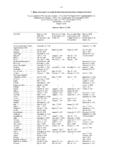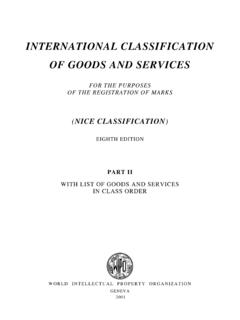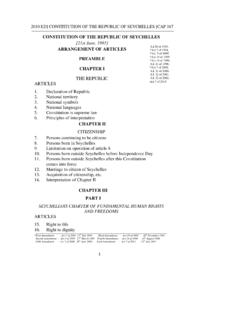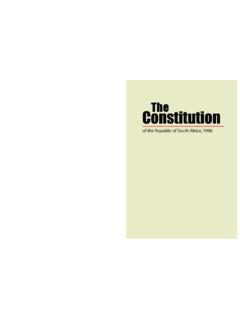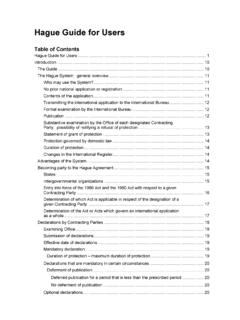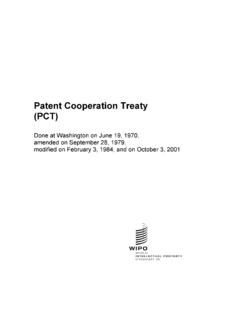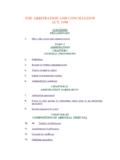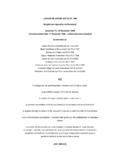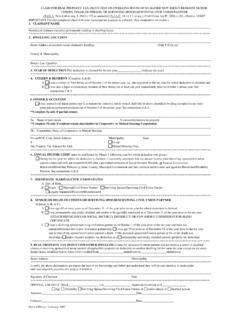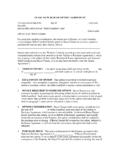Transcription of What is Intellectual Property
1 What is Intellectual Property ?Watch: Courtesy Swatch AGTable of ContentsPageWhat is Intellectual Property ?2 What is a Patent?5 What is a Trademark?8 What is an Industrial Design?12 What is a Geographical Indication? 15 What are Copyright 18and Related Rights?What is the World Intellectual 22 Property Organization?What is Intellectual Property ?2 What is Intellectual PropertyIntellectual Property refers tocreations of the mind: inventions;literary and artistic works; andsymbols, names and images usedin commerce. Intellectual propertyis divided into two categories:Industrial Propertyincludespatents for inventions,trademarks, industrial designsand geographical literaryworks (such as novels,poems and plays), films,music, artistic works ( , drawings, paintings,photographs and sculptures)and architectural related to copyrightinclude those of performingartists in their performances,producers of phonograms in their recordings, andbroadcasters in their radioand television isIntellectualProperty?
2 What are Intellectual Property rights? Intellectual Property rights are like any other Property right. They allow creators, or owners, ofpatents, trademarks or copyrightedworks to benefit from their ownwork or investment in a rights are outlined in Article27 of the Universal Declaration of Human Rights, which providesfor the right to benefit from the protection of moral andmaterial interests resulting fromauthorship of scientific, literary or artistic importance of intellectualproperty was first recognized inthe Paris Convention for theProtection of Industrial Property (1883) and the Berne Conventionfor the Protection of Literary andArtistic Works (1886). Bothtreaties are administered by theWorld Intellectual PropertyOrganization (WIPO).Why promote and protectintellectual Property ?There are several compellingreasons. First, the progress andwell-being of humanity rest on itscapacity to create and invent newworks in the areas of technologyand culture.
3 Second, the legalprotection of new creationsencourages the commitment ofadditional resources for furtherinnovation. Third, the promotionand protection of intellectualproperty spurs economic growth,creates new jobs and industries,and enhances the quality andenjoyment of efficient and equitableintellectual Property system can helpall countries to realize intellectualproperty s potential as a catalystfor economic development andsocial and cultural well-being. The Intellectual Property systemhelps strike a balance between the interests of innovators and the public interest, providing anenvironment in which creativityand invention can flourish, for the benefit of does the average person benefit? Intellectual Property rights rewardcreativity and human endeavor,which fuel the progress ofhumankind. Some examples:The multibillion dollar film,recording, publishing andsoftware industries whichbring pleasure to millions ofpeople worldwide wouldnot exist without the rewards providedby the patent system,researchers and inventorswould have little incentive tocontinue producing betterand more efficient productsfor would have nomeans to confidently buyproducts or services withoutreliable, internationaltrademark protection andenforcement mechanisms to discourage counterfeitingand is a Patent?
4 What is a Patent?A patent is an exclusive rightgranted for an invention a product or process that providesa new way of doing something, or that offers a new technicalsolution to a patent provides patent ownerswith protection for their is granted for a limitedperiod, generally 20 are patents necessary?Patents provide incentives toindividuals by recognizing theircreativity and offering the possibilityof material reward for theirmarketable inventions. Theseincentives encourage innovation,which in turn enhances the qualityof human kind of protection do patents offer?Patent protection means aninvention cannot be commerciallymade, used, distributed or soldwithout the patent owner sconsent. Patent rights are usuallyenforced in courts that, in mostsystems, hold the authority to stoppatent infringement. Conversely, a court can also declare a patentinvalid upon a successful challengeby a third rights do patentowners have?
5 A patent owner has the right todecide who may or may not use the patented invention for the period during which it isprotected. Patent owners may give5 permission to, or license, otherparties to use their inventions onmutually agreed terms. Ownersmay also sell their invention rightsto someone else, who thenbecomes the new owner of thepatent. Once a patent expires,protection ends and the inventionenters the public domain. This isalso known as becoming offpatent, meaning the owner nolonger holds exclusive rights tothe invention, and it becomesavailable for commercialexploitation by role do patents play in everyday life?Patented inventions have pervadedevery aspect of human life, fromelectric lighting (patents held byEdison and Swan) and sewingmachines (patents held by Howeand Singer), to magnetic resonanceimaging (MRI) (patents held byDamadian) and the iPhone(patents held by Apple).
6 In return for patent protection, all patent owners are obliged topublicly disclose information ontheir inventions in order to enrichthe total body of technicalknowledge in the world. This ever-increasing body of publicknowledge promotes furthercreativity and innovation. Patentstherefore provide not onlyprotection for their owners butalso valuable information andinspiration for future generationsof researchers and is a patent granted?The first step in securing a patentis to file a patent application. Theapplication generally contains thetitle of the invention, as well as anindication of its technical field. Itmust include the background anda description of the invention, inclear language and enough detailthat an individual with an averageunderstanding of the field coulduse or reproduce the descriptions are usuallyaccompanied by visual materials drawings, plans or diagrams thatdescribe the invention in greaterdetail.
7 The application alsocontains various claims , that is,information to help determine theextent of protection to be grantedby the kinds of inventionscan be protected?An invention must, in general,fulfill the following conditions tobe protected by a patent. It mustbe of practical use; it must showan element of novelty , meaningsome new characteristic that isnot part of the body of existingknowledge in its particular technicalfield. That body of existingknowledge is called prior art .The invention must show an inventive step that could not be deduced by a person withaverage knowledge of the technicalfield. Its subject matter must be accepted as patentable under law. In many countries,scientific theories, mathematicalmethods, plant or animal varieties,discoveries of natural substances,commercial methods or methodsof medical treatment (as opposedto medical products) are notgenerally grants patents?
8 Patents are granted by nationalpatent offices or by regionaloffices that carry out examinationwork for a group of countries for example, the European PatentOffice (EPO) and the AfricanIntellectual Property Organization(OAPI). Under such regionalsystems, an applicant requestsprotection for an invention in oneor more countries, and eachcountry decides whether to offerpatent protection within itsborders. The WIPO-administeredPatent Cooperation Treaty (PCT)provides for the filing of a singleinternational patent applicationthat has the same effect as nationalapplications filed in the designatedcountries. An applicant seekingprotection may file one applicationand request protection in as manysignatory states as is a trademark?A trademark is a distinctive signthat identifies certain goods orservices produced or provided byan individual or a company.
9 Itsorigin dates back to ancient timeswhen craftsmen reproduced theirsignatures, or marks , on theirartistic works or products of afunctional or practical nature. Over the years, these marks haveevolved into today s system oftrademark registration andprotection. The system helpsconsumers to identify andpurchase a product or servicebased on whether its specificcharacteristics and quality asindicated by its unique trademark meet their is atrademark? AMWhat do trademarks do?Trademark protection ensures thatthe owners of marks have theexclusive right to use them toidentify goods or services, or toauthorize others to use them inreturn for payment. The period ofprotection varies, but a trademarkcan be renewed indefinitely uponpayment of the correspondingfees. Trademark protection islegally enforced by courts that, inmost systems, have the authorityto stop trademark a larger sense, trademarkspromote initiative and enterpriseworldwide by rewarding theirowners with recognition andfinancial profit.
10 Trademarkprotection also hinders the effortsof unfair competitors, such ascounterfeiters, to use similardistinctive signs to market inferioror different products or system enables people withskill and enterprise to produce andmarket goods and services in thefairest possible conditions, therebyfacilitating international kinds of trademarkscan be registered?Trademarks may be one or acombination of words, letters andnumerals. They may consist ofdrawings, symbols or three-dimensional signs, such as theshape and packaging of some countries, non-traditionalmarks may be registered fordistinguishing features such asholograms, motion, color andnon-visible signs (sound, smell or taste).In addition to identifying thecommercial source of goods orservices, several other trademarkcategories also exist. Collectivemarks are owned by an associationwhose members use them toindicate products with a certainlevel of quality and who agree to adhere to specific requirementsset by the association.
